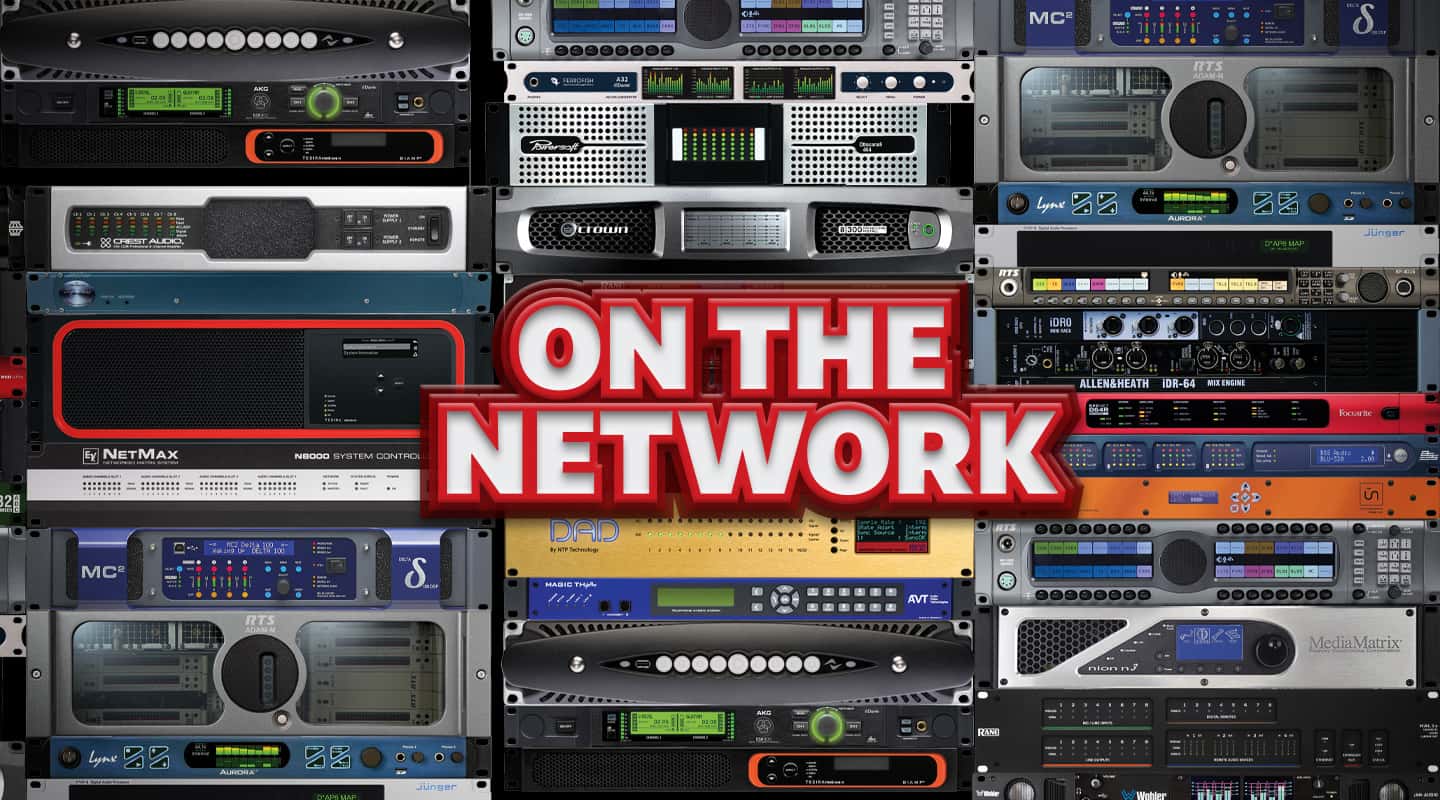
On the Network
AV Asia Pacific sits down with Aidan Williams, CTO of Aussie audio-over-IP innovator, Audinate.
Interview:/ Christopher Holder
‘Darn-tay’ or ‘Donn-tay’? I’m more of a Darn-tay kinda person. Donn-tay sounds too posh for my Aussie sensibilities. In my renaissance literature book club, would I refer to Donn-tay’s Infer-r-r-r-r-no [with an ostentatiously-elongated rolled ‘r’]?
Either way, Audinate’s Dante has become an entrenched part of the commercial AV vernacular.
Audinate is an Australian success story. From its Ultimo roots, Audinate now has offices around the world, and more than 350 manufacturers are now producing Dante-enabled product. From recording studios, to outside broadcast trucks, to live sound and commercial AV installations, there are 1000+ Dante-enabled products to choose from.
The Dante-promise is uncompressed, multichannel, high-quality, low-latency audio over a standard IP network. That promise was a reality back in 2006 when Dante was launched. These days Audinate has made the lives of the ever-expanding Dante community even easier with a suite of software tools that allow you to monitor, manage your Dante network and with Dante Via, to shanghai your audio sources and destinations on your Mac or PC into the Dante network.
Given Audinate’s regular release of firmware upgrades to all licensees and given the standardisation of the Dante chips and the Dante Brooklyn module, every Dante-enabled product is fully interoperable with every other.
NAVIGATING THE MARKET
Is everyone a fan? Well, not exactly. The Dante chips materially add to the cost of a product and there has been a long-held belief that inevitably the audio-over-IP smarts would run natively on a commodity processor and be open source.
The AVnu Alliance was formed to turn that dream into reality, developing AVB as an open source standard. Trouble is, AVB needs a more expensive super-charged IP switch, which has slowed progress.
The AES67 standard promises a basis of interoperability between audio-over-IP protocols (including Dante) but Dante has a collection of features over and above the AES67 standard that ensure it currently stays ahead of the pack.
QSC’s QLAN has become the a defacto standard for audio-over-IP in mega projects as its QSYS DSP engine happily operates on Intel processors — riding the hyperpolic swell of Moore’s Law. One suspects the industry would love to see QSC beneficently make QLAN open source, but why would it? In the meantime Dante’s extensive ‘rainbow nation’ ecosphere is a potent parry to QSC’s promise of unlimited power. And, indeed, there are plenty of projects that leverage both.
AV Asia Pacific spent an afternoon with Audinate’s CTO and founder Aidan Williams to take stock of just how far his company has come and how he views the future.
REALLY MOTOROLA-ING
To better understand Audinate in 2017 you need to understand Audinate circa 2003… back before Dante even existed.
By day, Aidan was employed as an IT network engineer with Motorola Labs: “I was working on automatic configuration and discovery at Motorola Labs in the early 2000s and that technology by that time was kind of done. But low latency through Ethernet networking certainly was not done. In particular, being able to get good synchronisation while you were still using a network, was not done. The challenge was: can we do synchronisation well with off-the-shelf networking technology without having to sell special-purpose Ethernet switches?”
On the other hand, by night, Aidan was (and is) a keen home studio musician and engineer, which had him thinking about cables in another way: “Being a home studio guy, and having a network background, back in those days I looked at the recording and production technology, saw all the wires and all the connections — saw the ‘computer-ness’ of it — and thought, surely ‘all these analogue connections have got to go away?’. Ultimately they’ve got to disappear.”
Aidan and a small team of researchers, thanks to some federal funding through NICTA (National Information & Communication Technology Australia, which subsequently merged with CSIRO), set about solving the problem. Come 2006 the technology was commercialised, and Audinate was born.
OVER THE NETWORK
AV Asia Pacific: Some 15 years ago you weren’t the only company with an audio-over-IP solution, Cobranet was having considerable success, there was MediaMatrix and Digigram’s Ethersound was making progress in broadcast circles.
Aidan Williams: They were all custom solutions and couldn’t share the network. For example, at the same sort of time as our launch, Gibson [of guitar fame] was pushing something called MaGIC [Media-accelerated Global Information Carrier], an initiative it was working on with 3COM. (Some will remember 3COM as a really quite massive networking company at the time, which went to the wall.)
Gibson was proposing a you-beaut audio networking solution, and to realise it they were creating a new kind of Ethernet switch that shuffled audio packets and samples all over the place. In other words: MaGIC needed a special purpose audio switch.
What we were trying to do was take off-the-shelf, garden variety, 100Mbps Ethernet and see whether we could actually crack the nut of solving the synchronisation piece.
IN SYNC
AV Asia Pacific: Why was proper sync the key?
Aidan Williams: If you can be sure that two devices are synchronised, you can have a pretty good idea what the latency is through the network. Put another way: if you know that one particular device is producing packets at exactly the same rate as they’re being consumed, you know when they’re going to turn up.
Once you have good synchronisation, you can drive out a lot of the buffering in the device itself. So the foundation of low latency is good quality sync.
AV Asia Pacific: What was the Dante secret? How did you crack the nut?
Aidan Williams: One of the things we did in Dante, which is a subtle and under-appreciated thing, is that we split the clock synchronisation information from the audio data.
The received wisdom at the time was: you’ve gotta get all the audio there first. But that’s not actually right. Getting the sync information through the network first is what really, really matters. So as long as you’re synchronised at each end, packets can arrive with a little bit of wriggle room.
“This is going to sound weird coming from the CTO but the value of Dante now is not primarily technological”
AV Asia Pacific: Right. So with Dante you don’t need to collar the network administrator to prioritise the audio packets?
Aidan Williams: No. In fact one of the things you don’t want to do in most networks is take high rates of packets — thousands and thousands of packets per second — and pass that into some quality of service prioritisation scheme and say, “You must get every single one of those tens of thousands of packets there within some really tight time window, otherwise the whole system doesn’t work.”
AV Asia Pacific: Why not?
Aidan Williams: Because it’s just a hard problem to solve. If you think of network traffic like cars on a highway, then separating the sync information is like providing a dedicated bus lane. The sync gets there before the audio packets, which means that if the packets don’t arrive precisely when they’re expected that’s okay, your sync can sort it all out.
AV Asia Pacific: And the sync info is obviously going to be far less intense than the audio packets.
Aidan Williams: Right. Sync represents only some 10-12 packets per second. IT people don’t mind prioritising small and infrequent packets like that. They sure as hell don’t like having Megabits and Megabits of high-priority audio traffic.
ON THE ROAD AGAIN
AV Asia Pacific: Guaranteeing sync sounds easy when it’s point to point but harder on a complicated network.
Aidan Williams: Yes. So the problem was not making Dante work across a single wire. Anybody can do that. The problem was making Dante work with off-the-shelf networking technology, which at the time was 100Mb Ethernet switches.
AV Asia Pacific: You didn’t have to wait too long for Gigabit. Was that a revelation?
Aidan Williams: If we use the analogy of vehicles on a road again, think of 100Mb Ethernet as a one-lane road, then moving to Gigabit ethernet was like upgrading to a 10-lane freeway — you get truckloads more channels and you get there faster because often there’s proportionally less traffic on the network. The result is better latency as well as more channels.
We solved the sync problem for the 100Mb case, and it only got better as the network speeds improved.
AV Asia Pacific: Is the better performance on faster/wider networks a ‘given’ when you designed Dante?
Aidan Williams: We expected networking links to get faster, so we were very careful to ensure our design was able to take advantage of faster links. To give you an example of a technology that doesn’t do that, that’s Cobranet.
PATH TO MARKET
AV Asia Pacific: You developed Dante as a research project which was subsequently commercialised. I wonder if things would have been very different if your development had come from within a big organisation like a Harman or a Yamaha.
Aidan Williams: That’s an interesting thought. I dunno. But looking back, there’s a number of dimensions to it. I think there are no shortage of companies that have created their own internal networking technology. So I think it was important that Audinate was a separate company, in the sense that we could sell the technology to everybody and we weren’t some subsidiary of a competitor.
That level of arm’s length separation has certainly helped from the point of view of selling the technology to manufacturers. We’re not the only independent company. At the time, Cirrus Logic bought Cobranet for example, and they still sell Cobranet chips. They’re not developing it anymore, but they’re still selling them.
So they were independent and that technology could have kicked on if they’d continued to invest in it. But they didn’t.
“I would argue that AES67 is addressing the problem we already solved back in 2006”
AV Asia Pacific: Were you determined from the earliest stages to build Audinate as a company rather than selling the technology to the highest bidder?
Aidan Williams: I always thought of Dante as a very transformational thing, to take all those analogue wires around the place and convert them into Ethernet cable. To eliminate the XLR from the face of the planet, that kind of concept.
AV Asia Pacific: Right so you were an idealist, and didn’t have a mercenary ‘cash-in’ mentality in the early days.
Aidan Williams: No, and don’t forget, it wasn’t like a slam dunk at the time. For six or seven years in the early life of the company, we were trying our hardest to sell the technology to notable manufacturers who had the ability to put it into loads of products and actually make a material difference.
AV Asia Pacific: And that wasn’t easy.
Aidan Williams: We felt a little like Alexander Graham Bell trying to sell the first telephones. Once you’ve proven the telephone works you’ve got to prove its utility, that it’s somehow useful. Trouble is, they can only call you because you’re the only other person with a telephone. So you sell a few more, and do your best to create a larger group. Eventually you get to a point where enough people have telephones, where suddenly you don’t have to convince everybody that telephones are a good idea.
AV Asia Pacific: When did you know you had a critical mass?
Aidan Williams: Yamaha used Pro Light & Sound early in 2012 to launch the CL Series of mixing consoles and a bunch of associated stage boxes.
Here was a large, conservative, Japanese AV manufacturer, renowned for not taking risks on technology, releasing a portfolio of products with Dante built in. And it was not only built in, it was the way you connected from the stage box to the console — without Dante you wouldn’t have the full complement of I/O.
That was a watershed for us, but we only truly felt the impact three months later at the US InfoComm show in 2012, where we had a queue of manufacturers saying: ‘Well, if the QA test house for the pro AV industry (ie. Yamaha) reckons Dante is alright, then it must be!’
We went from working to convince people about the validity of the ‘telephone’ — conducting demos which proved to people how Dante worked… ‘show me that it works, I don’t believe you’ — to talking to people about their product that needs networking… ‘Yamaha has bet on it, we’re prepared to bet on it too’.
I grew up in a farming area, and it reminded me somewhat of convincing a flock of sheep to go through a gate — you need the first few to bolt through for the others to follow. Not that the pro audio industry is a mob of sheep!
GOOD DIGITAL, BAD DIGITAL
AV Asia Pacific: When you launched, the sound quality of digital was still a big concern — there was some terrible-sounding digital on the market. Dante had a good reputation in that regard from the beginning. Was that always a part of that early blueprint?
Aidan Williams: Yeah, absolutely it was. Early on in the life of the company, when we were doing technology development, around 2003 to 2007 or so, everyone would go on about jitter — which CD player has the lowest jitter etc.
Some of that fed into the pro audio side and the better engineers in the industry knew that some of these networking technologies had some terrible internal clock sources. And there were third-party products to clean up crappy clocks.
Networking was a bit like that as well. It’s possible to have a good implementation that would generate a nice, clean clock. And we were very careful about making sure we did that because we had exposure early on to people like [Apogee Digital founder and Australian audio legend] Bruce Jackson, who was really quite adamant about exceeding certain digital specification benchmarks.
So we picked up on audio quality fairly early on, otherwise all we’d done is create a digital system with a crappy clock and things would drop out, not sync properly, and the audio quality would be substandard because the converters wouldn’t work very well.
IP WHAT?
AV Asia Pacific: When you launched, lots of audio guys were dreading the switch to digital, so to introduce networking and internet protocols was a bit like the end of the world — ‘not only do I need to learn digital, you now want me to use computer cable!?’ What was it like talking to audio people during the launch phase?
Aidan Williams: Yeah, that’s an interesting one. We had a great experience with Bruce Jackson and his Dolby Lake team in Sydney. He saw how his product [DLP] could get a hell of a lot simpler if the audio and everything else ran over one network. So that probably coloured our vision and gave us an unrealistic view of how progressive the audio world could be.
On the other hand, I distinctly recall an AES show in, say, 2006, where we had a demo setup. This guy rocks up — big beard; AV dude. “We’ve got this audio technology, we can get packets across the network.” He said, “That’s not possible.” I said, “Do you want to see a demo?” He said, “No I don’t want to see a demo because I know it’s not possible!”
“Our customers want the freedom to choose the right product for the job not be corralled into one manufacturer’s line”
So I think we had it reasonably hard, but I think that Cobranet had done a lot of the heavy lifting for us years earlier — people were prepared to at least countenance the IT side of it.
Where things changed with Dante was we could demonstrate not only a system with low-latency and tight synchronisation, it was easy to use. It was simply a matter of plugging something in, for it to turn up in Dante Controller, and click the matrix to patch it somewhere. The reaction was: “I can do that!”
Previously the conception of IT was having to punch in a bunch of numbers. That was rightly beyond the pale for audio people.
Even today I think one of the big steps towards full acceptance is just to get someone to try it. There’s a preconception that it’ll be really difficult, but when they actually try it… “Oh it wasn’t that bad!”
NEW SEASON
AV Asia Pacific: You’ve got over the critical mass hump with 350+ vendors on your books and 1000+ products lines, but you’re also more challenged technologically than you’ve ever been. What do you need to do to maintain this sort of trajectory?
Aidan Williams: This is going to sound weird coming from the CTO but the value of Dante now is not primarily technological. I think the value of Dante, now, is the brand promise of guaranteed interoperability and the ecosystem of products.
AV Asia Pacific: What about adding video? I’m sure I’m not the first person to ask you about video?
Aidan Williams: We expect to be able to provide video solutions in the future, so absolutely it’s on the radar. It’s not fundamentally different from what we do now. There are some obvious differences and one is the torrent of data involved with video as opposed to audio. Network bandwidth is not keeping up with video bandwidth so you need to press the two curves together over time.
WHO’S AFRAID OF AES67
AV Asia Pacific: The interoperability guarantee that makes Dante so appealing, is also AES67’s selling point.
Aidan Williams: That’s the promise but AES67 doesn’t have the same feature set as Dante. We have firmware that supports AES67, and we’re picking up people who want the AES67 interoperability but they also want to have all the other features of Dante, like plug ’n’ play discovery and being able to have parallel redundant links.
AV Asia Pacific: But surely the development of AES67 is going to take clients away from Audinate as manufacturers roll their own network protocol but can also play in a Dante world?
Aidan Williams: Some manufacturers are attracted to roll-your-own solutions, some proprietary (eg. QSC) some based on standards (eg. Biamp). Rolling your own allows manufacters to decide who connects
to their system. Both Dante and AES67 have been used to connect roll-your-own solutions to other products.
However, the capabilities of AES67 and Dante are like chalk and cheese. Dante provides a complete solution with discovery, redundancy, commercial support, software, etc. AES67 on the other is a piece of the puzzle, not a whole solution. Manufacturers get AES67 with Dante, but they also get instant access to a large ecosystem of compatible products.
If you’re a synthesiser person then you’ll remember General MIDI. It allowed MIDI files to playback on any GM synth. Great. Trouble was, it didn’t sound very good because you were only scratching the surface of the possibilities afforded to you by a the MIDI protocol. Currently AES67 is a bit like General MIDI.
AV Asia Pacific: What’s your assessment of the market acceptance of AES67?
Aidan Williams: It’s a standard and it’s deployable. My take as a networking person is that there are very few successful industry network technologies that haven’t got some associated standards with them. If you look at a company like Cisco; Cisco has built all sorts of proprietary technologies which ultimately have ended up in different forms in standards organisations all around the place. I think Audinate has done exactly the same thing.
AES67 didn’t exist when we were solving the audio networking issues back in 2006. Now, AES67 is thoroughly informed by the design of Dante — it has an obvious lineage back to the work we’ve done. I would also argue that it’s addressing the problem we already solved back in 2006. It’s not like we sat on our hands for the ensuing 10 years, there’s plenty of other things we’ve been working on since.
So people buy our solution because it’s off the shelf and has a full set of features — all the pieces they need to build products. AES67 is not inferior, it’s just has a narrower scope, it’s more limited, it’s not a complete solution. Its aim in life is to provide connectivity to the rest of the universe. That’s really what it’s trying to do.
But, like I said, it’s actually deployable, which is a massive tick from my point of view. As opposed to AVB. I remember everyone warning us, ‘AVB is going to come along, Dante is going to go away. Cisco is going to employ AVB, Dante won’t have a business anymore.’ Instead, because AVB requires changing the Ethernet switch… well, that’s not the way to gain market acceptance.
AVB OR NOT TO B
AV Asia Pacific: And in your opinion that’s the key AVB sticking point?
Aidan Williams: You just can’t deploy it without crow-barring in all the extra Ethernet switch stuff. And with that, the chip vendors have been keen to sell the advantages of the extra functionality in an AVB switch and get people to upgrade their switches.
Some of the upselling was couched in technological terms about guaranteed quality of service, as if there’s no other way to achieve guaranteed quality of service. As we all know, there are plenty of people running mission critical networks not using AVB that would say they have guaranteed quality of service. I can tell you Sydney Trains’ signalling has got guaranteed quality of service, and it’s not using AVB.
Remember: prior to Dante, in order to employ audio networking, you had to put in separate switches, separate infrastructure. You may as well run analogue cables if you’re going to do that. That’s the split universe idea of delivering AV systems and that’s not how we view the world.
We want to make sure that everything we do in our implementations uses the kind of protocols that people use in normal IT environments to manage devices and to do QoS, and manage Multicast within the network. We speak all the right protocols to enable a Dante product with a Dante chip or module to just plug straight into an IT infrastructure and have it be a normal citizen on an IT network. So your average IT person is not going to freak out over the fact there’s a Dante box on the network.
NIPPING AT THE HEELS
AV Asia Pacific: Is that one reason why QSC is gaining traction, because it’s pushing even harder to be a good IT network citizen?
Aidan Williams: That’s a good question. I don’t know if that’s the case. QSC has a view around the future merging of AV and IT technology, and certainly a lot of its products are based on Intel chips that are badged QSC.
Audinate has a wider reach in terms of the entire ecosystem of manufacturers that we can drag into the IT world if we succeed in what we do. So I’d like to think in some senses we’re way more ‘all in’ than QSC because we’re trying to involve a whole industry — we’re not trying to do it with one manufacturer’s DSP product. That’d be an easier problem to solve.
Our customers want the freedom to choose the right product for the job not be corralled into one manufacturer’s line.
“We had a queue of manufacturers saying: ‘Well, if the QA test house for the pro AV industry (ie. Yamaha) reckons Dante is alright, then it must be!’”
AV Asia Pacific: QSC has the large-scale install market to itself at the moment. If you need 1000 FIR filters then it’s gotta be QSYS, and as a result QLAN gets a foot in the door.
Aidan Williams: QSC has a good product pitched at a reasonable price point. And because it has a newish, scalable product architecture built on IT-style chips, it does get to access the muscle of the Intel Corporation to deliver those 1000 FIR filters you refer to.
And QSC is competing with a bunch of other products, which to an extent were designed a while ago and maybe more bespoke in terms of their internal processing architectures. In the same way we consciously decided to ride the technology wave of 100Mb networking to Gigabit to 10 Gig, my guess is that QSC has consciously decided to ride the technology wave of the processor platforms that are available.
AV Asia Pacific: And my guess would be that Audinate’s R&D would be looking to develop a chip even more powerful Dante HC’s 512×512 capacity?
Aidan Williams: As I mentioned earlier I don’t think that’s priority No.1 at the moment. But take a look at Dante’s [newly launched] Domain Manager… that’s an example of where we’re putting our development efforts: how do we put additional software solutions on top of that core networking element to make things better for customers? That’s the key: solving customer’s problems.
Dante Domain Manager is a great example of building on the core Dante networking. We’re adding features like security, different levels of access control, routed network support and centralised logging and management to Dante networks. It’s about the whole solution.


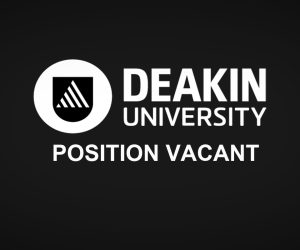
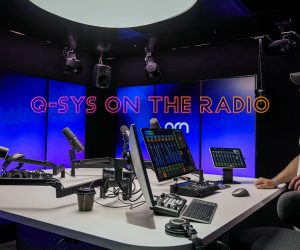

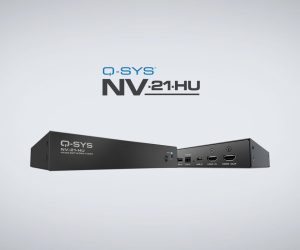




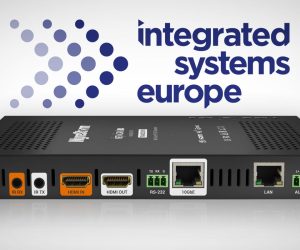



RESPONSES